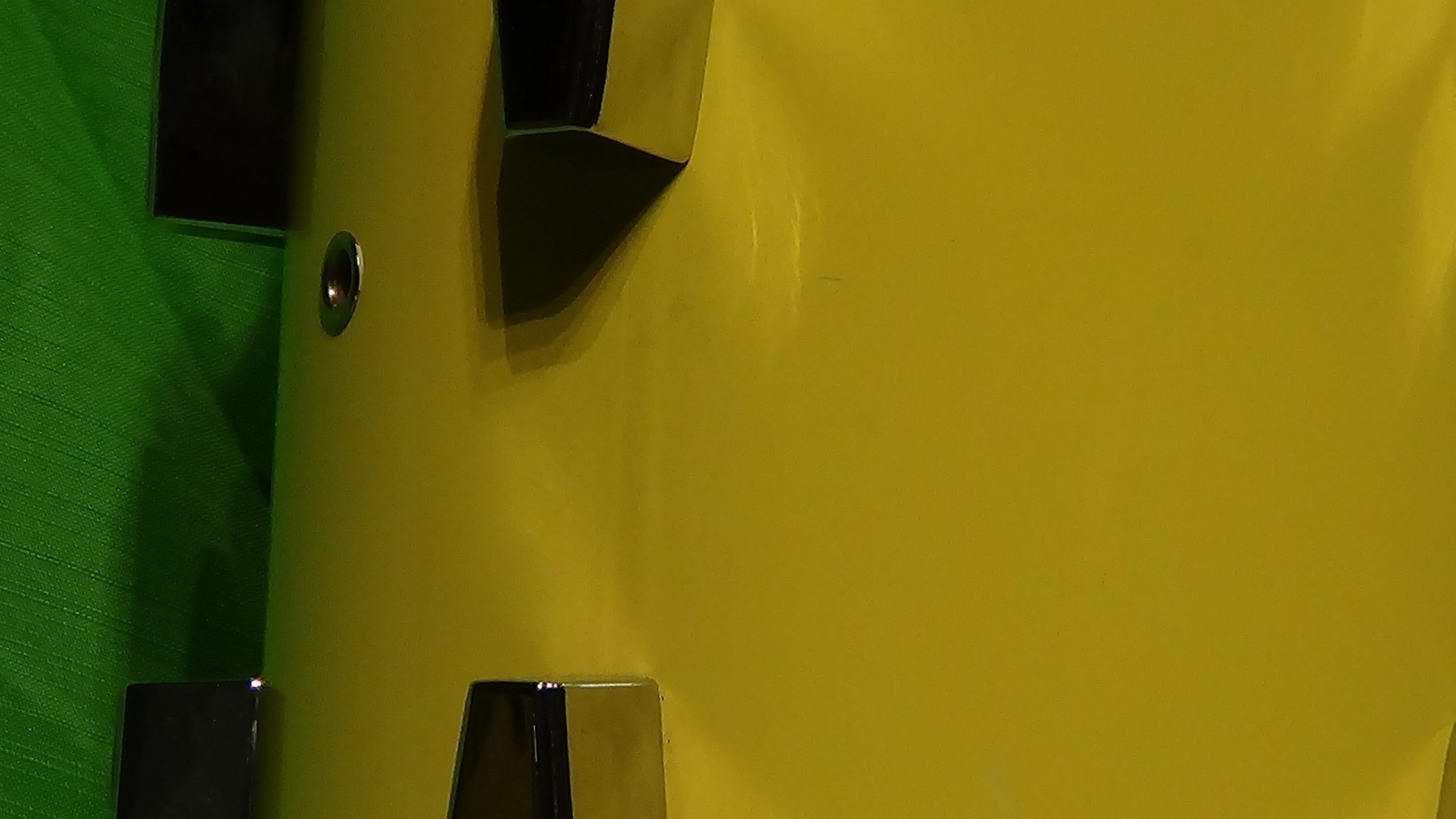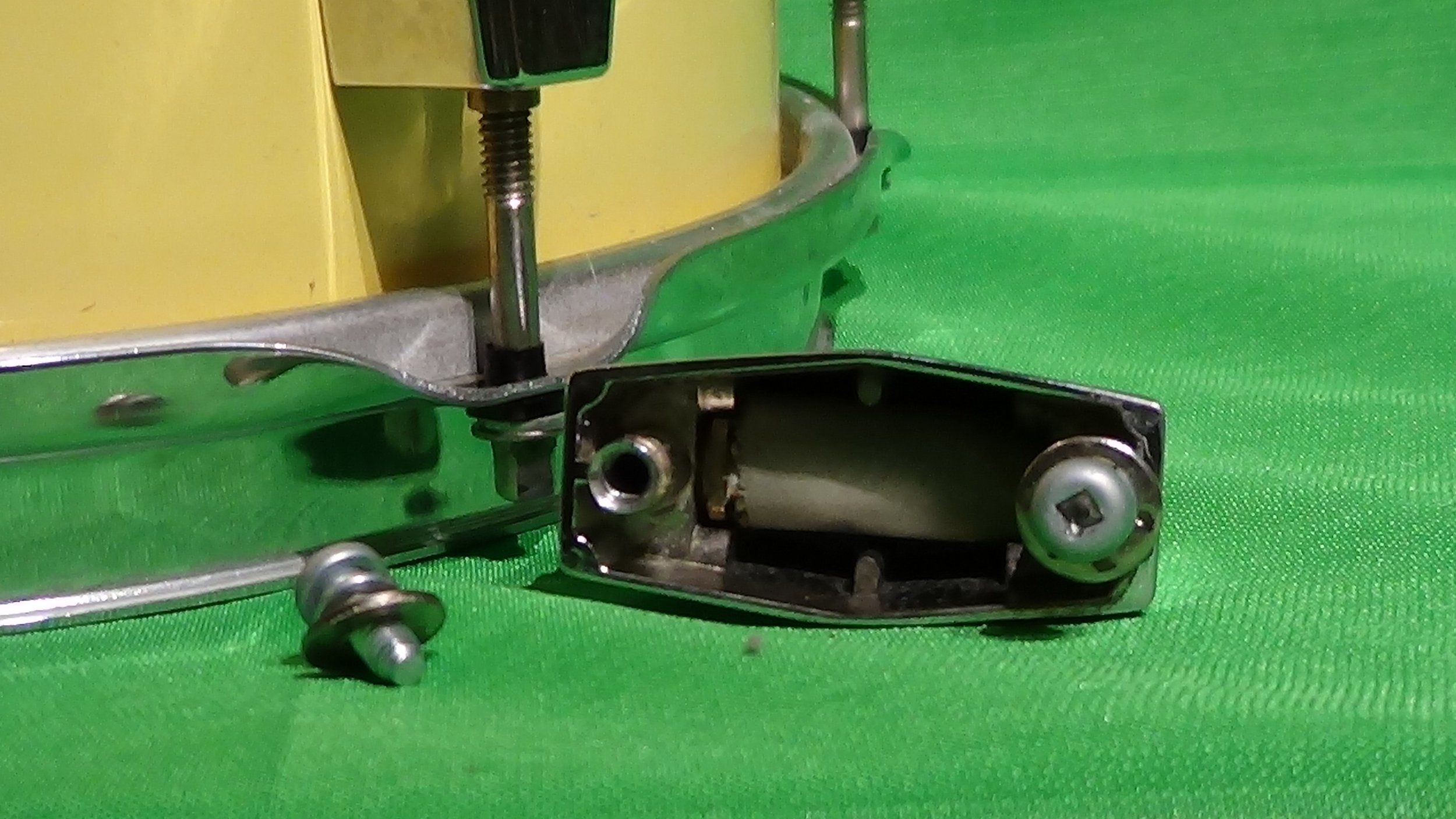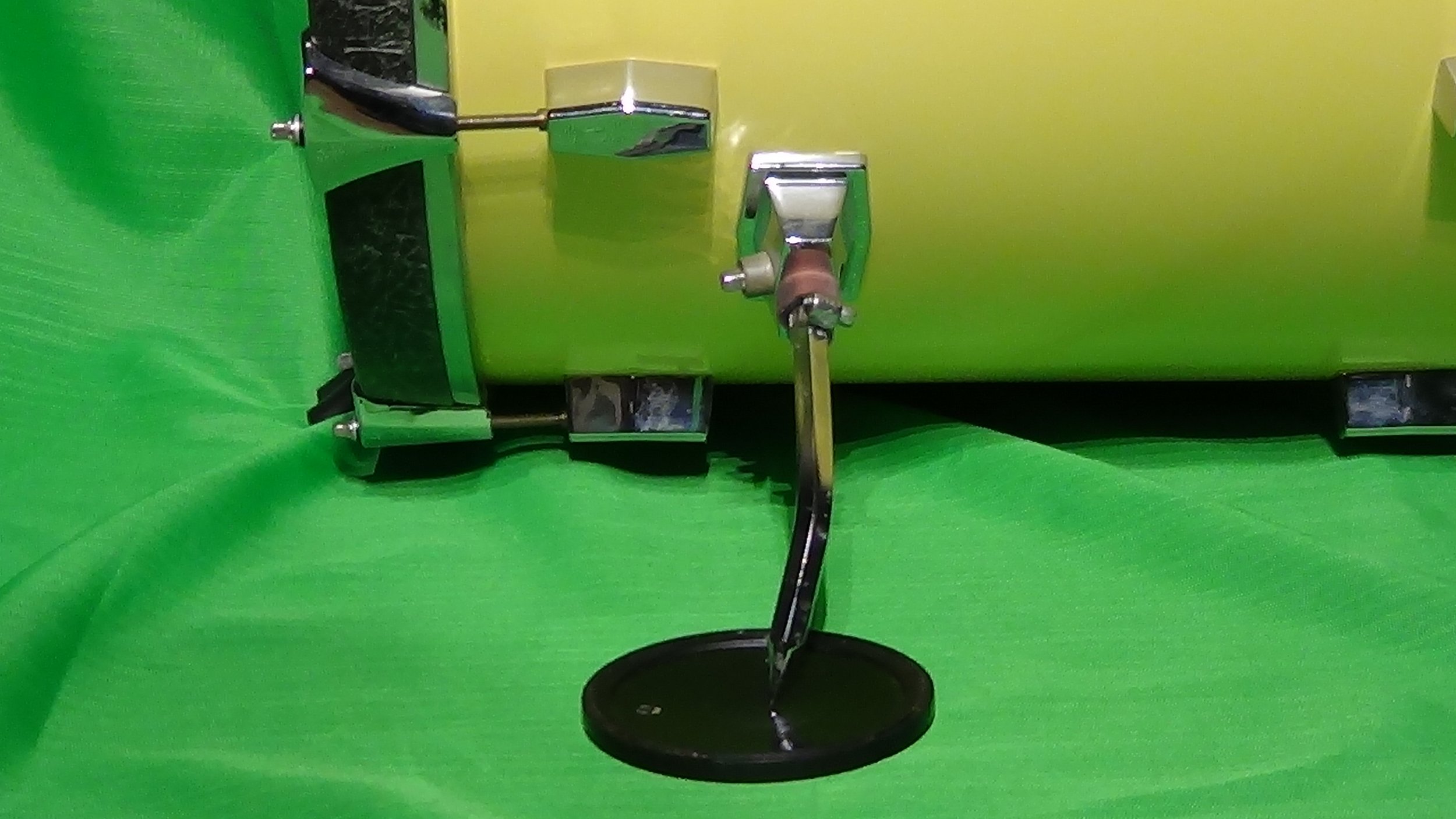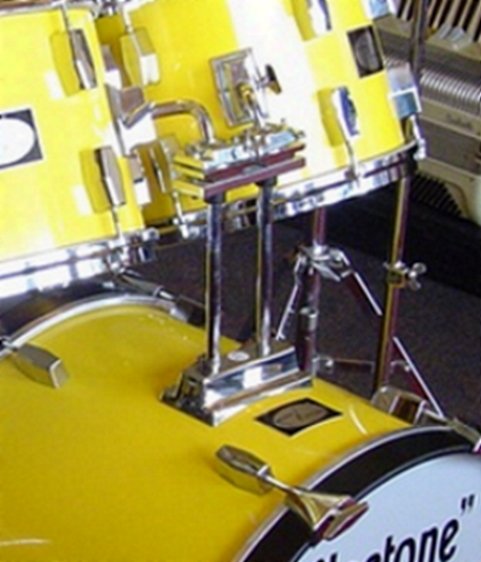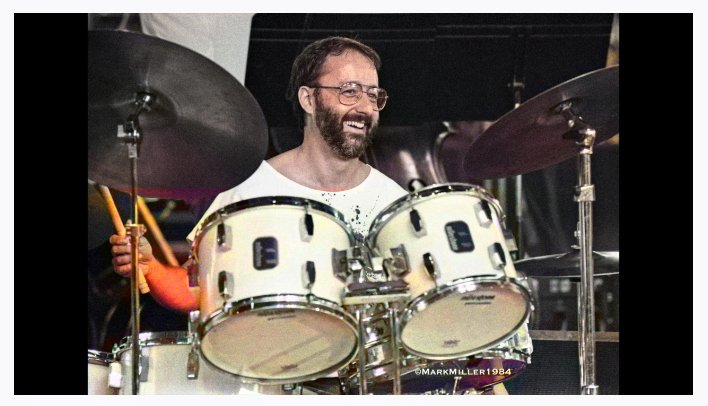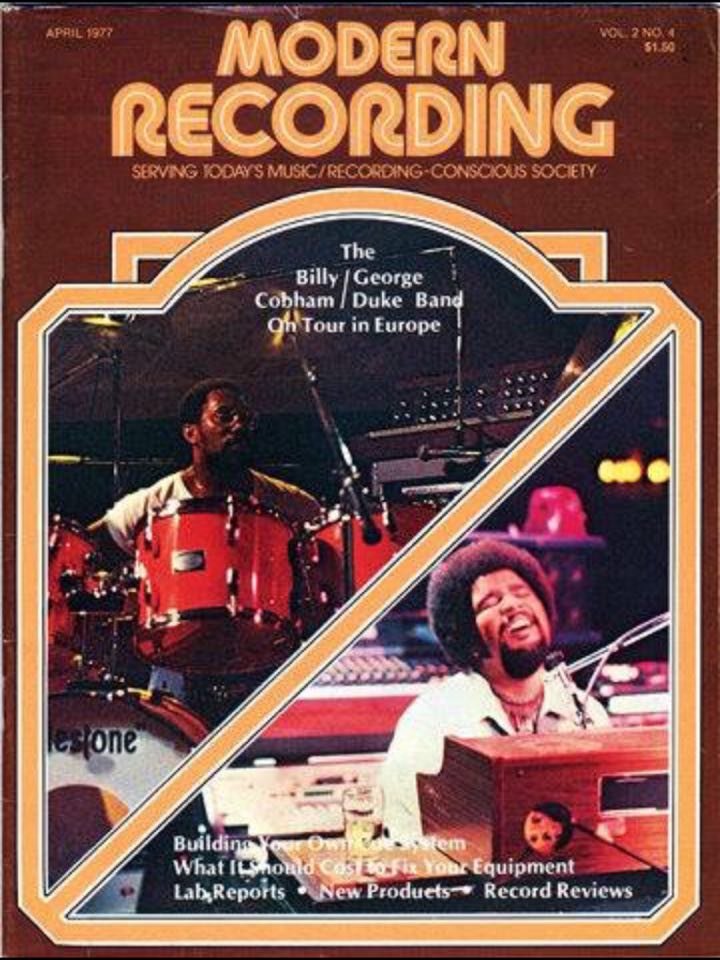It was the mid-'70s. I was at the annual MIAC show (1), the Canadian equivalent of NAMM. I was mainly interested in the drums as I was the entire drum department at the music store where I worked. While wandering the show floor, I met someone I knew and he told me I just had to see the drums that were upstairs. He gave me the room number and off I went ... third floor, I think.
In that hotel room was a tall redheaded fellow and a 5-piece set of off-white drums. He introduced himself as Michael Clapham, and he was the main force behind Milestone drums. He explained that the drums were made of “Therabond”, a type of fibreglass construction, and they included all the refinements he thought a working drummer needed.
I sat down behind the Ivory set and was somewhat intimidated. These drums spoke with authority ... lots of authority. The configuration was 16 x 22 bass, 9 x 12 tom, 10 x 13 tom, and 16 x 16 floor tom. The bass drum was like a cannon and just exploded under my rather small foot. The toms had huge resonance and depth, unlike anything I was familiar with at the time.
The 5 1/2 x 14 inch black snare (all snares were black to fit with any colour drum set) was equipped with stock Ludwig snares, release and bracket. Now, all snare drums sound pretty impressive in a hotel room, but this one seemed to have a bit more of everything.
The Milestone shells -- each one lovingly hand formed by Clapham and Co. -- were made from a range of 'formulas', each one selected for tone and resonance. Type 2 and 4 made for great bass drums. Toms were available in formula 3 and formula 6. Snares came in formulas 5 and 8. To my ears, there are subtle but discernible differences between the formulas.
The drum shells were moulded in one process from the outside in, with the finish being laid into the mould first, followed by the Therabond layer, and finished off with a sheet of fibreglass cloth. Milestone used Gel Coat finishes drawing from a palate of dozens of exotic colours. There was also a palette of glitters -- the stuff that's used on $100,000 speed boats (I sold an 8-piece set in 'grape glitter’ that was absolutely stunning! Originally set on black the buyer flipped when he saw the glitter finishes.) When extracted from the mould, each drum would exhibit a fine line where the mould seam had been ... essentially a birth mark attesting to its one-piece nature (Fig 1).
Many of the features on the Milestone drums were a first -- a few went on to become the standard for the industry -- and each was a change that Clapham felt was overdue. At the time, they were one of the most expensive drums on the market.
Images
Tension casings have machined brass inserts. Traditional springs were replaced by rubber tubing (Fig. 2).
Except for 'fringe' sizes (6, 8, 10, 18) all drums featured die-cast hoops of Clapham's design.
Thick, angled hexagonal bass drum spurs rarely slipped, and had the potential to cause significant damage to floors (Fig 3).
The bass drums feature key-bolts rather than T-rods and the hoops are charcoal-coloured fibreglass. The front one is narrow so as not to affect resonance; the rear one is deeper to be more compatible with pedal clamps.
The cast mounting brackets eschewed standard wingnuts in favour of key-bolts and included a back-up threaded hole, just in case.
The long, hexagonal floor tom legs are slightly curved, a small but significant change. As the drum goes higher, the support base gets wider. Simple rubber grommets helped with part location.
Michael felt that deeper drums were necessary to keep up with the music of the period. He could build a drum to almost any depth, and may have, to some degree, been responsible for the 'cannon tom' craze of the '70s (Fig 4).
The “Twin Pillar” tom attachment never caught on, sadly. I never had trouble getting the toms exactly where I wanted them (Fig 5).
On a personal note
My first Milestone set was a 7-piece: 7.5 x 8, 8.5 x 10, 9 x 12, 10 x 13, 14 x 14, and 16 x 16. The bass drum was 16 x 20. I chose the Safari Yellow finish as it looks absolutely amazing under any type of lighting. I later bought a 6 x 14 snare and I’m sure it’s partly to blame for my hearing damage. That drum was dangerous. Unfortunately, the whole rig turned out to be too much for me and the music I played at the time. I sold the set to a student and downsized(?) to 10 x 10, 10 x 12, 14 x 14, and 16 x 18 BD, also Safari Yellow.
I still have my Milestone ‘be-bop’ kit. They are the most impressive drums I've ever played, but I do have one small complaint. These drums need to be hit. For a hard player, Milestone may be some of best drums ever made, but for a lounge player like me, I often can't do them justice.
(1) MIAC: Musical Instrument Association of Canada < https://www.miac.net/>.


